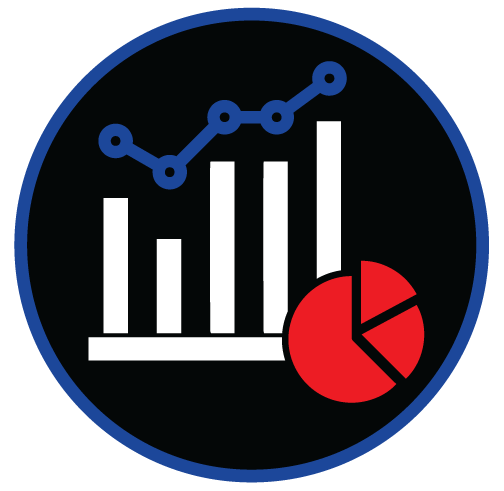
Mobile App Discovery
Secure Your Mobile Footprint: ThreatNG's Mobile App Exposure Analysis
Mobile apps are critical to any organization's digital presence but can also introduce significant security risks. ThreatNG's Mobile App Discovery module, a key component of our Sensitive Code Exposure Investigation Module, provides comprehensive visibility and assessment of your organization's mobile app attack surface. By discovering and analyzing apps across various marketplaces, ThreatNG identifies potential vulnerabilities, highlights areas of concern, and proactively empowers security teams to mitigate risks associated with mobile app exposures.

Uncover Your Mobile App Footprint
Mobile apps can introduce security risks. ThreatNG discovers apps in official and third-party stores, allowing you to uncover vulnerabilities and secure your mobile app attack surface.
Official App Stores: Amazon App Store, Apple App Store, Google Play, and LG Content Store
Third-Party App Stores: APKCombo, APKPure, AppBrain, AppCake, Appdb, Aptiode, TutuApp, and uptodown

Reveal Exposed Credentials and Identifiers
Mobile apps can expose sensitive information. ThreatNG goes beyond simple app identification to assess for access credentials, security credentials, and platform-specific identifiers within mobile apps, providing the visibility needed to mitigate potential threats.
Credentials that grant access to specific systems, applications, or data. They authenticate a user or application and authorize them to perform particular actions. They are used for logging in, accessing APIs, and approving requests.
Sensitive information used to verify identity or authorize access to protected resources includes access credentials, cryptographic keys, and secrets essential for maintaining the confidentiality and integrity of systems and data. The compromise of these credentials can result in significant security breaches.
Unique identifiers or credentials specific to a particular platform, service, or vendor. They are intended to function within that platform's authentication and authorization mechanisms. These identifiers are often associated with a specific vendor's APIs or services.
Identified Credenials and Secrets: Admin Directories, Amazon AWS Access Key ID, Amazon AWS S3 Bucket, APIs, Artifactory API Token, Artifactory Password, Authorization Bearer, AWS API Key, Basic Auth Credentials, Cloudinary Basic Auth, DEFCON CTF Flag, Discord BOT Token, External Sites, Facebook Access Token, Facebook ClientID, Facebook OAuth, Facebook Secret Key, Firebase, GitHub, GitHub Access Token, Google API Key, Google Cloud Platform OAuth, Google Cloud Platform Service Account, Google OAuth Access Token, HackTheBox CTF Flag, Heroku API Key, Mac Address, MailChimp API Key, Mailgun API Key, Mailto, Password in URL, PayPal Braintree Access Token, PGP private key block, Picatic API Key, RSA Private Key, Slack Token, Slack Webhook, Square Access Token, Square OAuth Secret, SSH DSA Private Key, SSH EC Private Key, Stripe API Key, Stripe Restricted API Key, TryHackMe CTF Flag, Twilio API Key, Twitter Access Token, Twitter ClientID, Twitter OAuth, Twitter Secret Key, User or Account
Secure Your Mobile App Ecosystem
Proactively manage mobile app risk across your attack surface, digital presence, and third-party relationships.

Comprehensive Visibility: To thoroughly understand your mobile app footprint, discover all mobile apps associated with your organization, even those published in unofficial marketplaces.
Proactive Risk Mitigation: Identify vulnerabilities and security weaknesses within your mobile apps before attackers can exploit them, reducing your overall attack surface.
Enhanced Security Posture: Continuously monitor your mobile apps for new threats and vulnerabilities, enabling you to maintain a strong security posture.
Sensitive Data Exposure Prevention: Uncover exposed credentials, API keys, and other sensitive information within mobile apps to prevent data leaks and unauthorized access.
Brand Reputation Protection: Identify and address insecure mobile apps that could damage your brand's reputation or lead to customer distrust.
Threat Intelligence Enrichment: Use intelligence repositories with data on vulnerabilities and compromised credentials to contextualize mobile app risks and prioritize remediation efforts.
Overall Security Rating Contribution: Mobile app security assessments provide a more accurate and comprehensive evaluation of your organization's security posture.
Cyber Risk Reduction: You reduce your organization's cyber risk exposure by identifying and mitigating mobile app vulnerabilities.
Benchmarking and Improvement: Use security ratings and assessments to benchmark your mobile app security against industry best practices and track improvement over time.

Brand Protection
Identify Malicious Apps: Detect malicious or fake versions of your organization's mobile apps that could harm your brand or customers.
Prevent Data Breaches: Secure mobile apps to prevent data breaches that could lead to negative publicity and damage your brand's reputation.
Maintain Customer Trust: Ensure the security and integrity of your mobile apps to maintain customer trust and loyalty.
Cloud & SaaS Exposure Management
Identify Cloud Credentials Exposure: Uncover cloud service credentials or API keys embedded in mobile apps that could lead to unauthorized access to cloud resources.
Secure SaaS Integrations: Assess the security of mobile apps that integrate with SaaS applications to prevent vulnerabilities in those integrations.
Prevent Data Leakage in the Cloud: Ensure mobile apps are not a source of data leakage that could expose sensitive information stored in cloud environments.
Due Diligence
Evaluate Acquisition Risks: Assess the security of mobile apps as part of due diligence for mergers and acquisitions to identify potential risks.
Vendor Security Assessment: Analyze mobile apps developed by potential vendors or partners to evaluate their security practices.
Investment Risk Assessment: Mobile app security assessments can help inform investment decisions by revealing the security posture of companies with mobile app portfolios.
Third-Party Risk Management
Assess Third-Party App Security: Evaluate the security of third-party mobile apps your organization uses or integrates with.
Prevent Supply Chain Attacks: Identify mobile app vulnerabilities that could be exploited to carry out supply chain attacks against your organization.
Enforce Security Policies: Ensure third-party mobile apps comply with your organization's security policies and standards.
Frequently Asked Questions
-
ThreatNG's Mobile App Discovery is a module within the Sensitive Code Exposure Investigation Module that provides organizations with visibility and assessment of their mobile app attack surface. It discovers mobile apps in marketplaces and analyzes them to identify potential vulnerabilities and risks, such as the presence of authentication/authorization tokens & keys, authentication credentials, and private keys.
-
Mobile apps are critical to an organization's digital presence but can introduce security risks. Mobile App Discovery helps organizations:
Uncover Hidden Vulnerabilities: Identify security weaknesses in mobile apps that attackers could exploit, such as insecure data storage, weak authentication mechanisms, and outdated libraries.
Gain Marketplace-Wide Visibility: See your mobile app presence across official (e.g., Apple App Store, Google Play, Amazon Appstore, LG Content Store) and unofficial app stores (e.g., APKCombo, APKPure, AppBrain, AppCake, Appdb, Aptoide, TutuApp, and uptodown), revealing unauthorized app distribution risks.
Protect Data: Assess how mobile apps handle sensitive data (user credentials, personal information, etc.) to ensure data privacy and compliance.
-
Security Teams: Proactively mitigate risks associated with mobile app exposures.
Risk Management Professionals: Understand and reduce cyber risk exposure related to mobile apps.
Brand Managers: Protect brand reputation by identifying and addressing insecure or malicious mobile apps.
Compliance Officers: Ensure mobile apps comply with data privacy regulations.
IT Departments: Secure SaaS integrations.
Legal and Due Diligence Teams: Evaluate acquisition risks and vendor security related to mobile apps.
-
Mobile App Discovery is crucial for EASM because it provides:
Comprehensive Visibility: Discovering all mobile apps, even in unofficial marketplaces, gives a complete view of an organization's mobile app footprint, a key component of their external attack surface.
Proactive Risk Mitigation: Identifying vulnerabilities before attackers exploit them reduces the overall attack surface.
Enhanced Security Posture: Continuous monitoring for new threats and vulnerabilities maintains a strong security posture.
-
ThreatNG's Mobile App Discovery interacts with other areas covered by ThreatNG to provide a holistic security approach:
Digital Risk Protection (DRP): Prevents data leaks by uncovering exposed credentials, API keys, and other sensitive information within mobile apps. It also protects brand reputation by identifying insecure apps.
Security Ratings: Mobile app security assessments contribute to a more accurate evaluation of an organization's overall security posture.
Brand Protection: Detects malicious or fake versions of apps.
Cloud and SaaS Exposure Management: Identifies cloud credentials exposed in mobile apps and secures SaaS integrations.
Third-Party Risk Management: Assesses the security of third-party apps and helps prevent supply chain attacks.
-
Example 1: ThreatNG could identify an organization's mobile app that inadvertently exposed an API key, allowing unauthorized access to sensitive data.
Example 2: ThreatNG could detect a malicious version of an organization's app designed to steal user credentials.
Example 3: ThreatNG could monitor app marketplaces for updates and alert security teams if a new version introduces vulnerabilities.





















